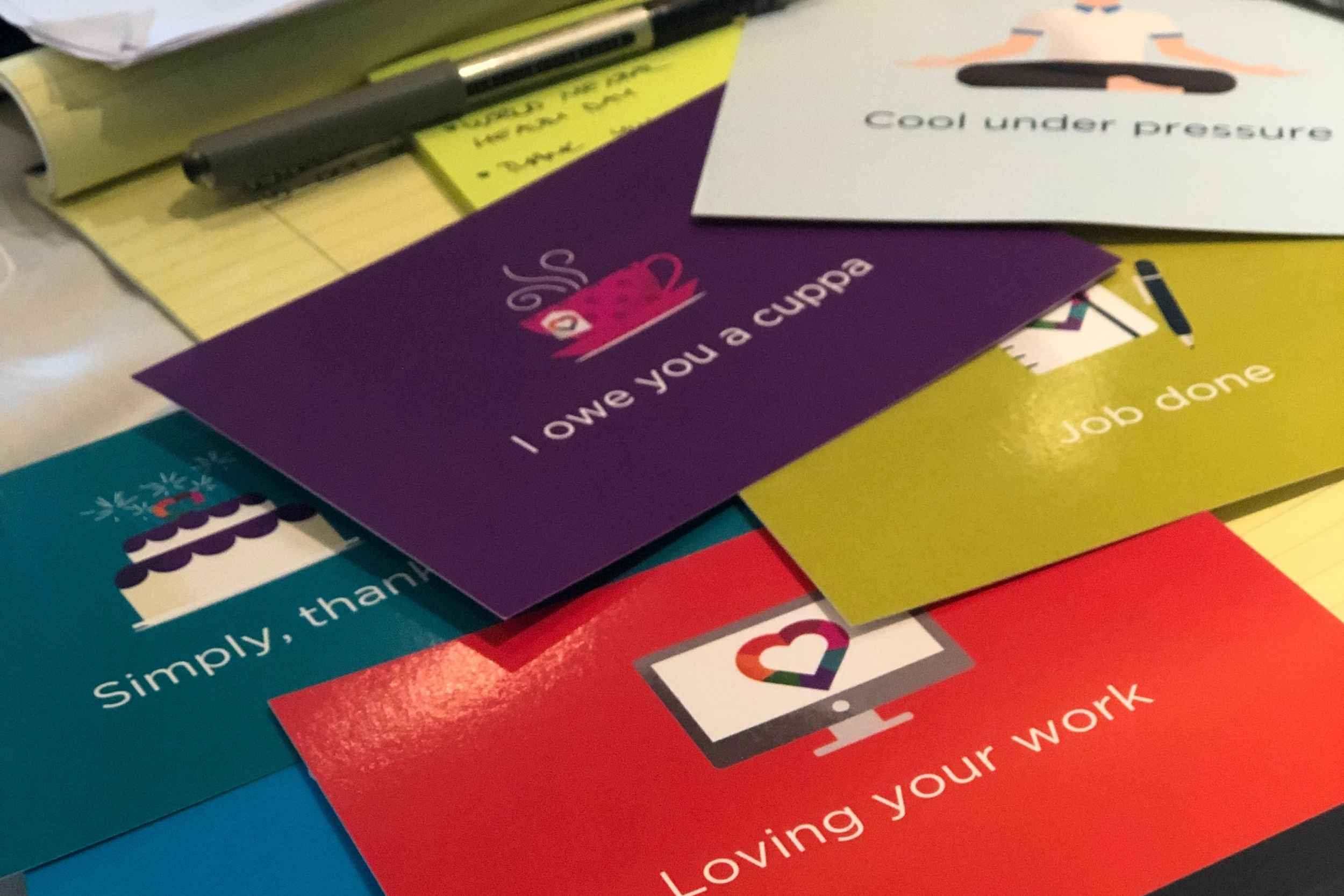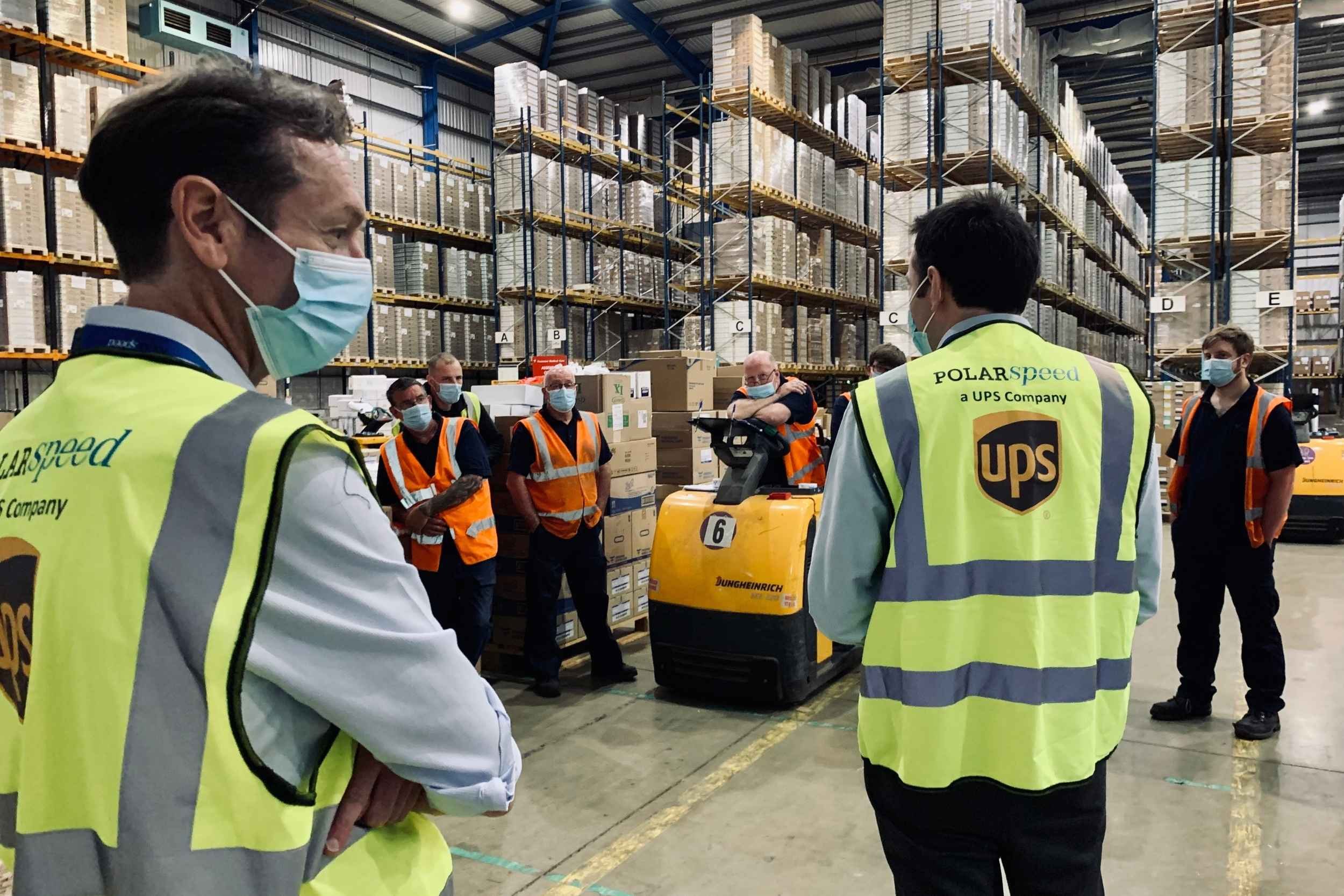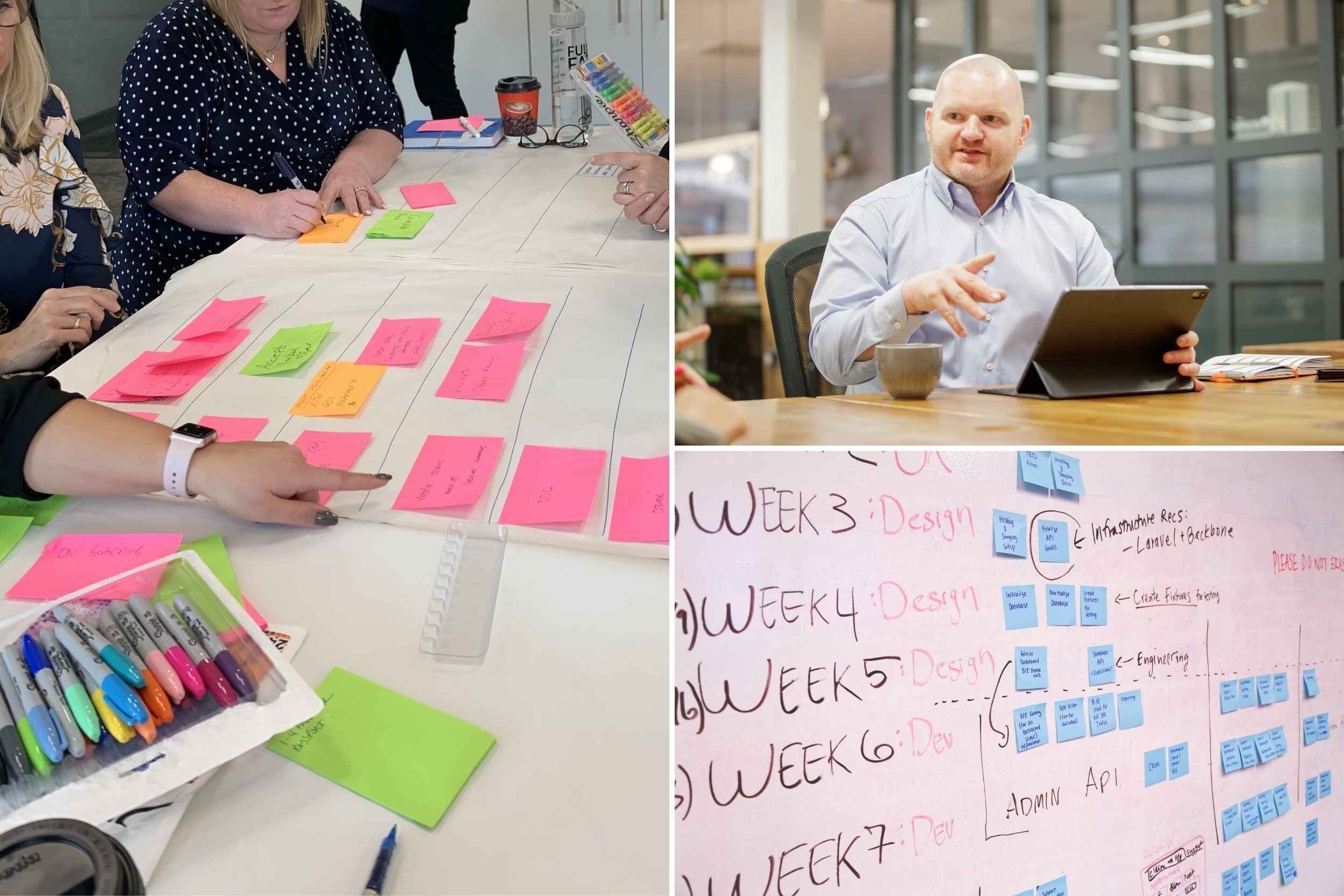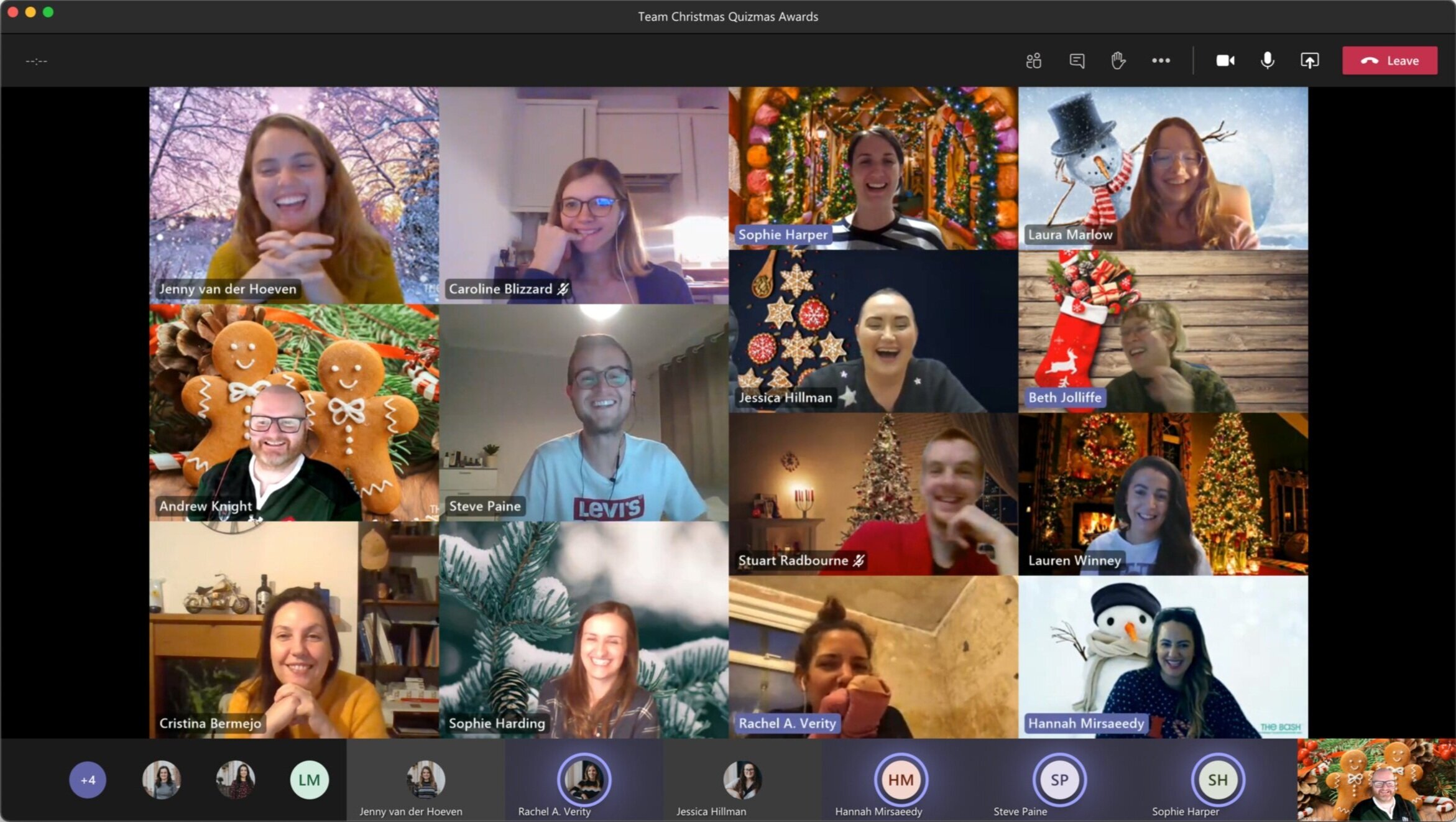Is there ever a ‘good way’ to tell people they no longer have a job? Well, Twitter and Stripe have recently had to grapple with this challenge, with other companies, such as Meta, following swiftly behind.
How leaders respond and communicate in difficult times is key to the health and wellbeing of both their people, and their business. Many companies have often already publicly declared how they want to talk to people, through proudly displayed value statements on their websites.
Blowing your own trumpet on what matters to your business is great, but it must be real. Have a little read of how important Twitter thinks healthy conversation is. In summary … ‘should be able to speak your mind’ … ‘find credible information easily’ …’want you to be part of the conversation’ … ‘you should feel safe.' Then consider the chaotic communication around the severance of potentially 7,500 Twitter staff over the past few weeks. This story has been delivered to the public domain through knee-jerk tweets from company leaders, complemented by tales of exceptionally poor treatment shared by disgruntled (and who can blame them) former employees.
Twitter slashed nearly half of its workforce without any warning or formal process
In stark contrast, financial infrastructure internet startup Stripe, issued a bold press statement, publicly explaining how and why they would be laying off 14% of their workforce. In a message that was slick beyond belief, the leadership team explained clearly what they were doing, and took full responsibility for mistakes that had been made. Their brand values? Well, they include: ‘move with urgency and focus’, ‘think rigorously’ and ‘optimism’. Their statement about staff lay-offs, is a perfect ode to their brand values. This is a crucial lesson for all leaders.
Create strong values, that you can really live by. Make them the foundation for your business and you will have a unshakeable confidence that will help to guide you through the tough times. This nugget, is the first of our essential lessons for leaders on laying people off with decency and integrity …
Stripe cut 14% of its staff and released one of the best statements I've ever seen
Always follow your internal procedures and comply with employment law
Above all, leaders must take note of the clear legislation and guidance from ACAS to guide employers who are considering making redundancies. If you’re not sure which process and procedure to follow, or which legislation applies to your changes, talk to your HR Business Partner or give us a call.
Ending people’s employment is one the hardest things you must do as a leader. We have lots of experience in supporting organisations to make difficult decisions with compassion and confidence. If you could benefit from the advice of an experienced specialist, then please, get in touch.
Twitter & Stripe: Do They Practise What They Preach?



Live your values – more so during challenging times

Lay-off and redundancy procedures should, as a minimum, be legally compliant

Word will get out – manage the message

Remember the people left behind – support them

Put a recovery plan in place

Final thought
I need HR support to restructure my team
Tag: Communication
HR myths busted: “Cost of living support – all staff, must be treated the same”
Doing the same for everyone means you are treating people equally. But your people are not all in the same position. Treating people fairly means that you do the right thing for that person, so you are meeting their individual needs. Giving everyone the same may feel fair, but it isn’t.

The cost of living crisis will not impact all your people equally. Higher earners will be better insulated to survive. How do you, as a CEO, implement support that helps the people that need it, without ostracising the people that don’t?

What is the difference between treating people equally and treating people fairly?
Doing the same for everyone means you are treating people equally. But your people are not all in the same position. Treating people fairly means that you do the right thing for that person, so you are meeting their individual needs. Giving everyone the same may feel fair, but it isn’t.
Equal treatment (i.e. the same) doesn't always produce an equitable outcome
One off payments may benefit higher paid staff more than lower paid colleagues
- There’s been a lot of publicity about one-off ‘cost of living payments’. Barclays, Co-operative Bank, Sky, Nationwide, Virgin Money, NatWest and HSBC are amongst many big brands that have decided to pursue this path.
- We urge you to think carefully before paying staff bonuses or making ‘cost of living’ payments.
- When you calculate a % of salary, or a cash lump sum remember that some formulas benefit higher-paid staff more than lower-paid staff. This defeats the object of financial support. Same goes for staff who earn commission and are on a relatively low-base pay, will you look at total earnings?

One off payments may increase your gender pay gap
If you’ve got a gender pay gap (and you probably have) and/or an ethnicity pay gap (which you also probably have and may not even measure) take care not to increase inequality through your actions.
Don’t assume low use of an existing benefit means it’s not valuable

You may inadvertently create a wider gender and ethnicity pay gap
If you’ve got a gender pay gap (and you probably have) and/or an ethnicity pay gap (which you also probably have and may not even measure) take care not to increase inequality through your actions
Not every benefit needs to have majority use to be valuable. Removing a low-use benefit might have a significant impact on some team members.
For example, a health cash plan, which gives cash back for dental, optical, and other routine health appointments, might be disproportionately beneficial to working families or those with long term health needs.
Be sure to check the impact of your decisions with a formal Equality Impact Assessment and by listening to your team before you act.
Don’t know where to start when it comes to supporting your team through the Cost of Living Crisis?
We are passionate about finding ways to help bosses do the best they can to look after their people.
Some of what we’ve outlined here is simple, but implementing activity that’s targeted to help those that need it most often gets businesses in a pickle. Primarily because they get bogged down about treating all employees the same.
If you need help to work how to support those that need it in a way that’s fair and legal, then please drop us a line. We’d be happy to talk to you.
HR myths busted: “Formal annual appraisals are more important than informal check-ins”
There was a time when it would be considered a clear mark of a rubbish employer if there wasn’t a structured yearly appraisal in place. But the modern workplace recognises that a date in the diary once a year, coupled with a fat form to fill in, is nowhere near as effective as regular informal feedback.

Too many businesses conduct annual reviews in a way that is overly formal, creating unnecessary paperwork and ticking a box, without really getting to the heart of the employee’s performance.
Lots of big companies, such as Adobe, have scrapped the yearly appraisal after realising the huge investment in the process often fails to hit the mark.
At Adobe, after a staff consultation, the old performance management system was replaced with check-in discussions at least once a quarter with less paperwork and proper space to review contributions, reward achievements and gather feedback.
It’s a great example, and is starting to be adopted by many forward-thinking companies.
Formal box-ticking appraisals are a barrier to good performance and development

How often should performance be reviewed?
There is no magic formula, but regular and meaningful is a good rule of thumb.
- Don’t save things up for a yearly formal review
- Involve employees in decisions to reprioritise workloads in real time, and explain why it’s necessary.
- Meet monthly for a structured review and if that’s not possible, no less than every six months.
Daily feedback is 6x more likely to be meaningful than annual feedback
How should I be managing and developing performance in my organisation?
- The key to managing performance is open and transparent conversations, where the employee feels in control of their own destiny.
- Both employer and employee know what’s expected of them, what they’re great at, and where they need support. It’s not rocket science, this approach builds engagement, which is better for business.
- Research shows engaged employees generate 43% more revenue than disengaged counterparts. High engagement can also lead to a tripling in profit growth, an 87% reduction in staff turnover and a 20% improvement in performance.
It's not rocket science: higher engagement = improved productivity and performance

What’s the starting point for a new system?
Make sure both the employee and manager are clear about what their performance is being measured against.
You will need:
- A job description that’s real, not aspirational! It should outline responsibilities, and accurately reflect the job that’s being done.
- A clear understanding of what’s expected at work.
- A rock-solid connection between individual goals and the goals of the business.
- With these basics in hand, managers can agree clear objectives and work out with employees how to regularly measure performance.
Have regular conversations to create a high performance culture

What does a good performance review system look like?
A system that’s working well will increase staff moral, engagement and productivity. It will nip problems in the bud by dealing with anything that comes up quickly, and will prevent the company from spending huge chunks of time on the paperwork that traditional annual appraisals generate.
Top tip: use a blend of formal reviews and informal development conversations
How can I design the right approach for me?
- What works for you will depend on your business, there is no one-size fits all, although as a general guide everyone could benefit from creating a process that:
- Reviews energy, engagement, wellbeing, resilience, skills, personal development and priorities.
- Creates a balanced scorecard which measures WHAT’s been achieved and progress made.
- Gathers feedback from colleagues, customers and managers on HOW the employees’ approach their work.
- Outlines goals and commitments …what’s happening next and how will the business support this.
- Moving from a yearly appraisal system to more regular check-ins may be a huge change for your organisation and managers may need lots of additional training and support.
- Managers may need training and support to give regular and meaningful feedback
Organisational wide forms, systems, templates and guidance are a good idea, including making best use of HR self-service and HR systems. Above all, managers need to be self-aware and understand how to tailor their approach to the needs and wants of each team member.
Managers may need training and support to give regular and meaningful feedback
Organisational wide forms, systems, templates and guidance are a good idea, including making best use of HR self-service and HR systems. Above all, managers need to be self-aware and understand how to tailor their approach to the needs and wants of each team member.
Don’t know where to start when it comes to supporting your team through the Cost of Living Crisis?
We are passionate about finding ways to help bosses do the best they can to look after their people.
Some of what we’ve outlined here is simple, but implementing activity that’s targeted to help those that need it most often gets businesses in a pickle. Primarily because they get bogged down about treating all employees the same.
If you need help to work how to support those that need it in a way that’s fair and legal, then please drop us a line. We’d be happy to talk to you.
Does your HR team make things easier or are they getting in the way?
We’ve talked a lot recently about how to spot when things aren’t going well. We’ve covered cultural blindspots, festering grievances and ineffective organisational structures.
In lots of cases these problems emerge because those in charge of managing HR are distracted by other stuff!
From holiday pay and recruitment challenges through to furlough – a busy HR team often gets bogged down with no time to see the big picture. It doesn’t have to be this way!
Changes to company infrastructure and HR systems could revolutionise the capacity of your HR team and make it easier for your organisation to get things done. After all, most (if not all) HR people want to do the best for you, your teams and your customers.
Our job as HR practitioners is to enable you to achieve your goals and objectives
Great. But what are HR doing, whilst I’m doing all the people stuff?

This might come as a bit of a shock, but virtually all day-to-day people management decisions should sit with line managers, not HR.
This means everything from 1:1s, performance coaching, recognising achievements, managing attendance, and so on…
Organisations that manage people through a centralised HR department are outdated and often not resourced effectively. Gone are the days of HR making decisions for managers or telling managers what to do.
In modern organisations, it’s HR that enables and managers that manage

It makes more sense for teams to be given the skills and flexibility to manage their people properly.
If you can achieve this, then your HR team will have the time and space to make your organisation function better. There are four things they can do to achieve this (Ulrich model):
Be a Strategic Partner
-
This is about the alignment of HR activities and initiatives with your business aims and strategy.
-
Strategic partners see beyond the internal function of HR to consider the customer and how best to organise the business to serve their needs.
-
It’s usually a job for HR Directors and HR Business Partners.
Be a Change Agent
-
An HR team can be instrumental in supporting change that helps the business to achieve its aims.
-
It’s not about restructuring for the sake of it.
-
The role of HR is to be an expert and trusted adviser, and driver of change activities.
-
They should also be able to understand the future skills and talent needed to make any organisational changes a success.
Be an Employee Champion
-
Being an employee champion is about doing the best for colleagues, leaders, and customers, it shouldn’t be confused with formal advocacy or trade union activity.
-
Good leadership, clear brand values and a solid organisational moral compass will nurture authentic employee champions.
-
These people are crucial and act as the conscience of the business, taking care of people at all levels equally, and prioritising ethical and fair business practices.
Be an Administrative Expert
-
We don’t mean the world’s fastest touch-typist!
-
In the past HR was about writing letters and documents for managers as they ‘couldn’t be trusted’ to do it themselves.
-
These days it’s about creating efficient administrative systems, providing user-friendly templates for managers to personalise and most of all, maintaining excellent HR technology that enables people.
-
In short, this is where HR can and should, get out of your way.
HR falls down when we focus on one role and not excellence in all areas

How are HR using technology to manage and enable people?
Knowing when to automate processes and when the human touch is still needed, is a key skill for HR leaders.
We all expect on-demand and instant service, from banking apps to self-service tills in stores, HR is no different.
Our colleagues expect to be able to easily make holiday bookings, record appraisal ratings and access their data at the touch of a button.
An HR team that’s nailed being an ‘administrative expert’ will be creating, maintaining, and evolving systems, tools, and technology to serve you better. Remember, a system with even a minimal level of automation can save hours of wasted time and admin that does not add value, freeing-up time for HR teams to add value in other ways.
HR technology can be used enhance engagement and save valuable time

What is the gold standard for a modern HR team?
Obviously, all organisations are different, but the key is to enable your HR Team to be an integral part of the business, not an afterthought.
HR Teams come in all different shapes and sizes, but the best and most effective HR functions a focused on their customers.
Award-winning HR Teams enable managers and teams to achieve their goals
We’ll give a gold star to any HR team that…
-
Puts the customer first – HR is a core support function, so an overhead that you need to get the best value for. HRBPs and HR Directors should be structuring the business to better achieve your customer goals. When you understand what the customer needs you can shape systems and processes accordingly.
-
Is a genuine catalyst for change – Top HR teams will ask tough questions about how you’re going to achieve your objectives. This can result in minor adaptations and actions, or major restructures and changes to how the business works. Either way, a top-notch HR team will be help you to manage change effectively and sustainably.
-
Empowers others to make change happen! – Your HR team should be the experts at enabling and empowering managers to deliver the business plan for your customers.
-
Makes the best use of talent and skill – Specialists specialise and generalists generalise. Wait…what? We’re talking about making the best use of talent, skill, and experience both within your team and elsewhere. Rely on your HRBP to get the best from your HR service and help you achieve your goals, and leave specialists to deliver project work and key goals across the organisation.
-
Is totally prepared to say ‘no’ – The best HR teams help leaders to avoid unfocused vanity projects and ad hoc ‘people initiatives’ (so unhelpful) that aren’t linked to a proper strategy or business goals. Empower your HR Team to say ‘no’ to things that will not help to achieve your vision.
How can I achieve HR gold?
Be bold and give more power to the people! If your HR team is micromanaging every person in your business from some ivory tower (or just a bog-standard red brick HQ) have a good think about what they could achieve if they weren’t rubber stamping holiday request forms or typing up appraisals.
There is so much that can be achieved by overhauling outdated systems. Even by introducing one single approval workflow in a business, we saved 1,000 hours of management time over a year.
Give me a call and I’ll explain how even minor changes like this can make a dramatic difference.
I need the help of a HR specialist to transform my HR function
You might not know how or where to start changing things to create extra capacity in your HR Team. You might need an experienced and knowledgeable HR specialist to help you get started and create an action plan.
I love working with HR Teams to release capacity and release their potential. Who knows what they might achieve?
Get in touch for a friendly chat about how I can help.
Image credits
Images sourced from Canva Pro and are photographers are not individually credited. If you see one of your photos above, please let us know so we can credit you here. Photo of Andrew Knight by Nick Morrish from Nick Morrish Photography
10 proactive things leaders can do now to influence company culture
It is challenging, but possible, to change your culture. There are lots of tools available to assess culture and there are simple things you could try and implement straight away to make your place a better place.

I’ve pulled together 10 straightforward and pragmatic ideas for leaders who want to improve workplace culture. It’s time to get stuck-in with some practical and actionable things that you can do in any organisation.
I’ve split these actions into organisation-wide, team and individual actions. It’s best practice to hit all three levels to give your culture change a chance to stick.
But before you start, imagine your organisation as a complex web of different traits, habits, actions … ways of communicating. If you really want to get under the skin of what’s going on, check out our article on company culture blindspots and make sure you’re not missing something crucial to your team’s success.
Your organisation is a complex network of different traits, habits, actions and ways of communicating
Things I can do as an individual to improve company culture
• Articulate your vision – Clearly explain what your vision is, get the senior managers onboard and create a plan to communicate across the business.
• Live by your values – Make sure your decisions align with the values of the organisation, both in good times and tough times. Personally demonstrate the business values every day.
• Talk to your customers – Find out what your customers really think of you. Using an external consultant here can encourage a customer to speak more freely and give honest feedback.
Things I can do as a manager to improve company culture
• Analyse all available data – Gather statistics that reflect how your culture is impacting customers and staff. Consider: customer complaints, Glassdoor reviews, Trustpilot reviews, attrition rates/absences and staff complaints.
• Listen to your team – Spend time with people. Visit the shop floor. Be seen. Be approachable. Get to know your staff and ask them what their experience of the business is.
• Recognise how COVID-19 changed how teams work – How has hybrid working during COVID-19 impacted team culture? Avoid ‘forced fun’. Consider scheduling people to be on-site at the same time, so they can work together naturally. Online collaboration time can be as helpful as blocking-out time for deep and meaningful work.
• Monitor workload & set boundaries – Make sure that everyone has an equal chance of success, time to meet customer expectations, and sufficient down-time. Consider a ‘no video meeting day’ each week, to allow space to focus.
Things I can do across my organisation to improve company culture
• Survey your team – When did you last benchmark how people are feeling? You could survey all your staff to see how they are feeling about the organisation post-pandemic. (Maybe a statement of the obvious, but only do this if you have bandwidth to analyse the results, listen to what you’re being told and crucially, do something about it.)
• Review your organisation design – Has any unfairness crept in due to remote working during the pandemic? Have you buried problems by some people not being physically present? Is everyone clear on who their manager is and who they go to for help?
• Improve internal communications – Check your communication channels work and reflect your company values. Are you sending a weekly newsletter into a black hole? Are people engaged? Is it 100% broadcast or is there interaction? If you are getting interaction, does everyone have a chance to join in?
Quick fixes won’t create a lasting and positive culture
Invest in your culture
Why bother investing in company culture? Well, it’s no coincidence that happy, healthy, profitable businesses put aside time and effort into nurturing a positive culture. Let’s be clear, this is a conscious choice that leaders make to invest in a positive, inclusive and productive workplace culture. It doesn’t have to be difficult but culture change does have to be planned and coordinated.

Taking action, particularly in a large business with lots of complexity, may feel like a mammoth task. This is particularly true if you’re not sure where to start.
Company culture is a bit like health & safety, compliance, safeguarding, etc.; it’s everyone’s job to develop and grow a positive workplace culture, but it starts with you. Leaders set the tone.
If the idea of cultural change is too much, an external consultant might be a worthwhile investment. It’s more cost effective to bring in a HR Consultant to do it right first time, than asking your team to try and pull together a plan for culture ‘off the side of their desks’ (and usually over a longer period).
Positive culture doesn’t just happen. Bring in an expert to get things moving and upskill your team
Depending on your workload and available resources, I’d always suggest allocating someone specific to lead on cultural change, whether this means bringing in an expert to work alongside and upskill your team, or giving someone a secondment or project opportunity. That way you’re getting focus and energy in the right place, and developing your own in-house capability at the same time.
However you do it, it’s all about enabling you to take control of your own cultural destiny and not being ‘done to’ either through inertia or reacting badly to events because your culture isn’t resilient or flexible.
I want to make positive cultural changes, but I need help getting started…
It can be daunting to get started, so you might need an experienced and knowledgeable HR consultant to assess your culture and create an action plan.
As a specialist in organisational change I love to get stuck-in and support clients to make positive changes in the workplace.
Get in touch for a friendly chat about how I can help.
Mergers and Acquisitions: How to Spot and Avoid Culture Clashes
There are rules for all the legal bits of a merger or acquisition process, yet there is no bible or handy instruction manual for the successful transfer or integration of company culture.

What is workplace culture?
There is no magic formula, but regular and meaningful is a good rule of thumb.
Workplace culture is your way of doing things, your approach and style of business. It’s the difference between ‘my door’s always open’ and ‘make an appointment with my PA’. It’s often tricky to explain but culture manifests itself through leadership style, how you treat your customers and colleagues, and the diversity of your workforce.
Culture can be seen in your people, personality, structure, purpose and values.
How can culture impact M&A?
An unforeseen culture clash creates an uncomfortable, disengaged work force.
If people don’t understand the values and objectives of the newly merged business they will quickly retreat into the familiarity of the old. This can slow down the integration of departments and operational systems. It also compromises customer service and sales if frontline colleagues don’t understand what kind of messages they should be communicating.

Every successful merger and acquisition has a plan to retain key talent and avoid an exodus
- Everyone’s talking about the great resignation at the moment, so it’s more important then ever before to have a plan for engagement, talent and culture. Especially if your acquiring a business or merging two organisations together.

How can I assess the culture of my acquisition?
It might be tricky to really get under the bonnet of your acquisition in advance of the legal transfer date. Certain information around TUPE, finances, compliance and commercial integration, are accessible. But when it comes to engagement and culture, you’re not going to be able to hover around the water cooler or join a team meeting to gather intel!
If you’re using an independent HR consultant to help you navigate the legal aspects of your merger or acquisition this can also be a great way to assess potential pain points and plan for the challenges ahead. An independent person may gain more access to the company being acquired and can help you learn more about the people you’re bringing in.
What clients say about our approach to M&A
“He did all the detail but he was also great at creating relationships. So whilst we were getting all the paperwork and legal stuff in place, he worked really closely with the individuals that were going to come into the business to build trust with them.”
Heyley Selway
Chief Executive, CCHA
“Studies from the Queens School of Business and the Gallup Organization showed that organizations with low employee engagement scores experienced 18% lower productivity, 16% lower profitability, 37% lower job growth, and 65% lower share price over time.”
Emma Seppälä & Kim Cameron
Harvard Business Review
Why does culture matter?
Clearly defined culture is a sign of a positive, engaged workforce, which means exceptional customer service, confident sales and marketing, increased productivity, reduced staff turnover and a better share price. Why? Because when everyone is working towards a shared vision your people are an amazing asset. When they don’t feel part of the bigger picture they switch off, and can do some serious damage.
Try to understand what the cultural differences are between the old and new company. Nip any opportunity for a ‘them and us’ dialogue to take hold with a clear communication plan that’s put into action pronto!

An engaged workforce is more profitable – can you afford not to think about culture?

Do leaders know how to promote positive culture?
If people are used to being managed in a certain way it can be deeply unsettling when a new regime comes along. One of the best ways to establish your organisation’s culture and ethos early on, is for management to get out on the shop floor and talk to people.
As a minimum, you should plan on hosting a Welcome Meeting where you can meet your new colleagues and tell them a bit about you and the new company. You can do more. Whether it’s a staff conference, video message, virtual event or just chatting informally to teams or individuals, nothing reassures people more than a boss that takes the time to listen.
As well giving people practical, operational information about how the business will look in the future it’s a great opportunity to gain insight into how people are feeling about the change.
A Welcome Meeting is a ‘must do’ when it comes to mergers and acquisitions
- Working out a change management plan in advance can give leaders structure and focus as they communicate their vision to employees old and new.
- This doesn’t come instinctively to everyone. You might be a sector-leading professional, with a multi-million pound business but actually have no idea how to inspire your workforce. Or you might just be shy! Use leadership coaching to help you articulate why the business matters and what your aspirations for the future are.
- It will help your team understand the right way of doing things and in times of pressure and stress they will feel confident about what you and the organisation stand for and which behaviours are unacceptable.


How can I take people with me?
As you plan for the future, consider the composition of your workforce.
If your organisation is office-based and you’re acquiring a business that works out in the field, how will you make those people feel welcome and avoid a two-tier workforce? Your ways of working and communicating historically may not suit your new colleagues. Sending an internal newsletter once a week via email is no good if half the business don’t sit at a desk (or have a smartphone).
As you move forward, find communication channels that work, so you can keep people informed, feeling part of the same team and contributing to your business goals.
Communicate in new ways to reach colleagues at all levels during and following an acquisition
- Ultimately it’s people that make the organisation tick, so make sure your people soak up the right information, so they’re able to perform in the way you want them to.
Don’t know where to start when it comes to supporting your team through the Cost of Living Crisis?
We are passionate about finding ways to help bosses do the best they can to look after their people.
Some of what we’ve outlined here is simple, but implementing activity that’s targeted to help those that need it most often gets businesses in a pickle. Primarily because they get bogged down about treating all employees the same.
If you need help to work how to support those that need it in a way that’s fair and legal, then please drop us a line. We’d be happy to talk to you.
How to put people at the heart of company decision making
Introducing a HR strategy that automates simple tasks and frees up time to focus on building a positive, people-focused company culture

- There are many misconceptions about the role of HR, which are often driven by a lack of visibility.
- When managers take accountability for people tasks that were traditionally considered part of the personnel function, it’s often seen as an indicator of good leadership; a sign that the people at the top of the company communicate well with their team. In many instances, there’s not always a need to call on HR to settle issues surrounding things like contracts, training, appraisals or bonuses.
- It’s more common to call on HR when a more technical or complicated people-related issue comes up. For example, when there’s uncertainty around regulatory or legal requirements surrounding employment, HR may be brought into the conversation as subject matter experts.
Misconceptions about HR are driven by a lack of visibility.
- A natural downside to this way of working is that many employees will only ever come across a HR professional when they’re being interviewed, or having to go through some sort of formal performance management or disciplinary process. This means that HR is sometimes seen as the department of ‘hiring and firing’, or that the ‘H’ in HR stands for anything other than human.
- I believe there’s a better way to approach the integration of HR in organisations: one that still allows leaders to stay connected with the people in their teams while placing the focus on core company values to better care for both colleagues and customers
- HR is the custodian of fairness, equality and inclusion in any business. This means that they’ll put systems and processes in place to make sure that you’re not discriminated against. You may not see them at any point during the selection process, but if you’re treated with dignity and respect, we’ve done our job right.
How should I be managing and developing performance in my organisation?
- The key to managing performance is open and transparent conversations, where the employee feels in control of their own destiny.
- Both employer and employee know what’s expected of them, what they’re great at, and where they need support. It’s not rocket science, this approach builds engagement, which is better for business.
- Research shows engaged employees generate 43% more revenue than disengaged counterparts. High engagement can also lead to a tripling in profit growth, an 87% reduction in staff turnover and a 20% improvement in performance.

Why quick fixes aren’t enough
- There’s no question that many businesses set out to do the right thing. Leaders often strive to live and breathe the core values of the companies they run, so that their actions, behaviours and decisions are consistent with these values and their organisation’s overall purpose.
- Some of the ‘quick fixes’ that businesses choose to demonstrate that they value their people and communities include:
- Flexible reward and recognition schemes
- Paying at least the living wage
- Developing a pipeline of leaders within the business
- Reinvesting profits in community investment schemes to demonstrate social value
Quick fixes won’t create a lasting and positive culture
- While these actions are all commendable, there are wider and more strategic decisions that can be taken to create a lasting and positive culture. This is where a dedicated HR expert can help.

A new model for HR
- Executives, directors, boards, business owners and leaders might consider moving from the Ulrich model (where HR is separated into roles such as employee champion, change agent, strategic partner and administrative expert) to a more evolved HR network model – one that builds on the success of existing business partnering relationships.
- Nowadays the majority of service centre work can be dealt with via automated workflows, AI, chatbots and self-service apps, allowing people to take care of admin tasks themselves. This means that tasks like managing annual leave balances, recording absences and related documentation or making basic queries about salary payments no longer require the resources they once did.
The team that previously would have managed such tasks will now be free to manage self-service platforms and related processes. In larger organisations, personalising and tailoring these platforms to the needs of the people who use them can be achieved without sacrificing efficiency or compliance.
HR needs to change. It’s time to focus on ‘people not process’
Meanwhile, HR project teams can act as internal consultants, focusing on work that is directly informed by the company’s people strategy. Their expertise can call upon a blend of internal and external resources, with subject matter experts working on important strategic areas of work such as:
- Organisational development
- Organisation design
- Diversity and inclusion
- Rewards
By following a model like this, HR becomes a network of change, engagement and influence. Your people team becomes a key part of wider business decision making, blurring the traditional boundaries of HR and putting people at the very heart of what the company does.
HR networks are excellent at building and growing relationships, managing change and engagement and work to achieve the wider strategy goals. When you consider all this, it seems natural to include HR in your decision making process.
Don’t know where to start when it comes to supporting your team through the Cost of Living Crisis?
We are passionate about finding ways to help bosses do the best they can to look after their people.
Some of what we’ve outlined here is simple, but implementing activity that’s targeted to help those that need it most often gets businesses in a pickle. Primarily because they get bogged down about treating all employees the same.
If you need help to work how to support those that need it in a way that’s fair and legal, then please drop us a line. We’d be happy to talk to you.
Build a pandemic-proof business in 2021
The coronavirus pandemic has affected us all in ways we’d have struggled to imagine when 2020 rolled around. If you run a business that has shifted from a face-to-face business model to a blended or virtual offering, the challenges and opportunities you face could leave you feeling all sorts of things: nervous, overwhelmed, uncertain and exhausted, to name just a few.

Now that we’re almost a year into the pandemic, it’s worth considering what the future of your business will look like on the other side of lockdown. If you’re not sure where to start, a HR consultant can help you to reengage with your team, identify the people challenges your business may face in the ‘new normal’ and develop your workforce to make the most of growth and development opportunities.
From leading teams remotely to keeping sight of your long-term business vision, here are some of the ways I’ve helped companies and individuals adapt and succeed during the pandemic.
Let your team hear your voice and see your face
Senior teams should be empowered to lead on operational matters and day-to-day issues. Try to create space and time for your team to look after your customers and to take ownership of their projects. This will release your time to focus on strategic matters, whether it’s the marketing plan for a post-vaccinated world or a new treasury strategy to take advantage of record-low interest rates.

Virtual leadership in the age of COVID-19
Leading a team remotely feels very different to managing a group of people in an office. Yet the core principles remain the same: to keep communication clear and open, inspire trust and get the best from the people you work with.
Keep information flowing and regularly share feedback
- It’s more important than ever to talk to your team regularly about how the business is performing. Involving colleagues in this process (for example, by asking what customers have been saying or encouraging individuals to explain what’s working well for them) can result in a more collaborative conversation where people feel valued and inspired to do well on behalf of the team.

Rebuilding with vision
What should leaders be focused on as they rebuild their businesses following the pandemic? The most important thing is to stick to your core values: making decisions, taking action and behaving in a way that reflects the ethos and character of your company.
Empower others and create space for yourself
- It’s more important than ever to talk to your team regularly about how the business is performing. Involving colleagues in this process (for example, by asking what customers have been saying or encouraging individuals to explain what’s working well for them) can result in a more collaborative conversation where people feel valued and inspired to do well on behalf of the team.
Stay focussed on your long term plans
- As well as keeping up momentum in the short term, it’s important to stay focused on long-term plans. You may need to recalibrate (and that’s OK) but don’t lose sight of your vision. Don’t forget to keep talking about it: clearly communicating your vision and plans to your team while engaging them in your COVID recovery plans will show clear and reassuring leadership as everyone recovers from the crisis.
Champion safety and wellbeing at work
- Above all, prioritise the safety and wellbeing of your workforce, your customers, your partners and stakeholders. People will always remember how you made them feel – you want that feeling to be safe, positive and reassuring.

Supporting your business through organisational change
- Economic and societal change are two of the big drivers for organisational change. COVID-19 has triggered both, making now an ideal time to consider how your organisation can adapt to meet the challenges and embrace the opportunities of 2021 and beyond.
- Working with an organisational change consultant will help to ensure that you make the most of the process. I’m passionate about helping my clients to optimise their organisations and meet whatever challenges come their way; getting to know the specific challenges your business is facing before coming up with smart, long-lasting solutions that are tailored to your company.
Don’t know where to start when it comes to supporting your team through the Cost of Living Crisis?
We are passionate about finding ways to help bosses do the best they can to look after their people.
Some of what we’ve outlined here is simple, but implementing activity that’s targeted to help those that need it most often gets businesses in a pickle. Primarily because they get bogged down about treating all employees the same.
If you need help to work how to support those that need it in a way that’s fair and legal, then please drop us a line. We’d be happy to talk to you.







